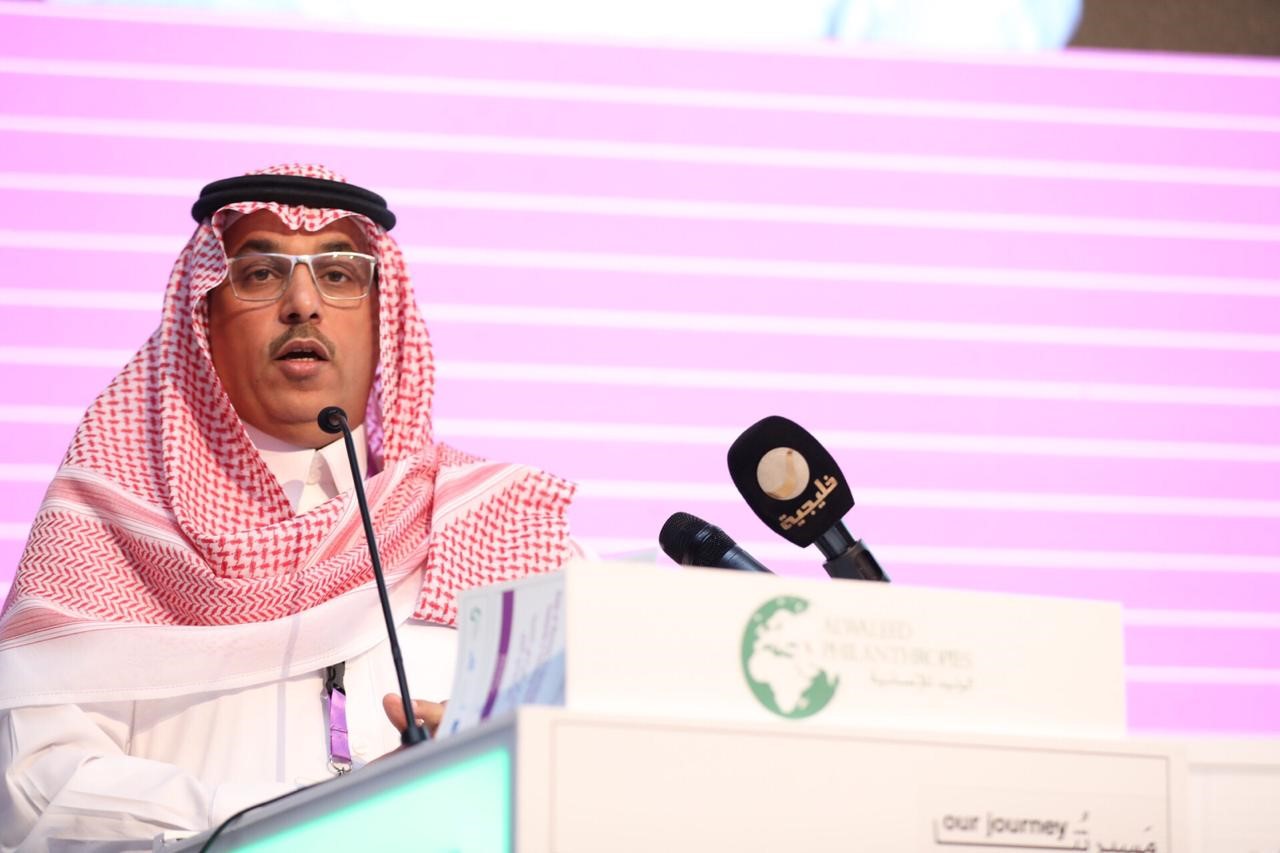
مؤتمر "دور المرأة السعودية في التنمية" يُعلن عن مؤشر تنمية المرأة بخمسة محاور و ( 56 ) متغير لدعم أصحاب القرار
With a collaboration between the National Observatory for Women, General Authority for Statistics, and Alwaleed Philanthropies
“The Role of Saudi Woman in Development” conference announces the indicator of woman development with five axes and (56) variables to support decision makers
On Saturday 22nd of Shaaban, 1440 H corresponding 27th of April, 2019, Minister of Labour and Social Development, Engineer Ahmed bin Sulaiman Alrajhi opened The conference of the Role of Saudi Woman in Development (Towards a Dynamic Society) in Riyadh. The conference was organized by the National Observatory for Women in King Saud University, General Authority for Statistics, and Alwaleed Philanthropies, with the participation of UN Woman. The National Observatory for Women’ indicators were launched in this conference. These indicators are considered tools that support the periodical measurement of Saudi woman participation in development. They are also considered one of the tools for developing strategies related to woman in Saudi Arabia to ensure the role of Saudi woman in development towards a dynamic society. These indicators complement all the National Observatory for Women’ previous indicators. However, the indicator that was launched today contains (56) variables distributed on five main axes; educational axis that supports the future of generations, health axis which concerns society protection, organizational axis which supports progress, economic axis for financial, industrial, and economic leadership in Saudi Arabia, in addition to the finally added one which is the social axis that contains the indicator of woman participation in development.
At the opening of the conference, Minister of Labour and Social Development asserted that (Saudi Vision 2030) has determined the road map and specified all national goals that empower woman, so that she becomes a real and active partner in developing our country. The vision also has developed executive programs and initiatives which will transfer all our hopes into real achievements. He added, we believe in women empowerment in our country with total conviction that is derived from the Islamic principles which give woman all her rights while offering her psychological and social protection. Since the foundation of our country, and its recent take off, the government has paid attention to woman basic rights and needs. To achieve this tendency, women empowerment programs have been designed especially in labour and education. Saudi woman nowadays registers high scores in both work and education. Moreover, she participates in many outstanding scientific research both locally and internationally. She also succeeds in the business sector, in addition to the management of corporations, banks and non-profit associations.
For his part, GATAT president, Dr. Fahad bin Sulaiman Altekhaifi indicated that the United Nations approved The Eight Millennium Development Goals (MDGs) until 2015. Many countries prepared reports to measure what goals have been achieved based on the issued official statistical indicators (either issued by official statistical entities, statistics of government entities, or statistics of international organizations). This experiment has undergone assessment and development. Committees and work teams have already started working on new SDGs until 2030 with (17 goals), and Saudi Arabia was one of the first countries who addressed SDGs. The SDGs governance was set by the Ministry of Economy and Planning (MEP) as the responsible entity for SDGs file, the General Authority for Statistics (GASTAT) as the responsible entity for building statistical indicators, in addition to other government ministries, authorities, and institutions which contribute in the planning and implementation of these goals in accordance with their nature of work. SDGs were also considered within the national strategies (Statistical indicators within the National Strategy of Statistical Development, and other strategies related to household, women, and childhood). As a result, Saudi Arabia submitted the voluntary report– within certain countries- last year in the United Nations. Dr. Fahad Altekhaifi stated that the model of the National Observatory for Women, and the tripartite partnership between the National Observatory for Women ,General Authority for Statistics, and Alwaleed Philanthropies for the survey study which included 15 thousand households from different Saudi regions- in addition to the works of this conference- represent an ideal model of the developmental Saudi administrative work Which affirms that the collaboration between different entities paves the way to overcome any challenges and achieve desired goals.
Mohammad Naciri, UN Women Regional Director for the Arab States and Asia-Pacific said that there are false impressions about women in GCC region and in Saudi Arabia particularly. The international media significantly contributed in spreading these impressions based on superficial analyses. He commended the efforts of the Government of the Kingdom of Saudi Arabia on the Women in Development Study. Furthermore, he confirmed that the results of the indicator adopted by (the National Observatory for Women, General Authority for Statistics, and Alwaleed Philanthropies) reflect the lived realities of Saudi women, and show improvement and progress in the fields of health and education.
On the other hand, HRH Princess Lamia bint Majed AL-Saud the Secretary General at Alwaleed Philanthropies pointed out that woman’s development indicator, which is the first of its kind came to express appreciation to the Saudi women’s efforts for their contributions in various fields and sectors. All data included in the indicator will help in launching distinctive initiatives and programs that will identify the social and economic obstacles facing women in Saudi Arabia as well as enhancing the cooperation with local and international partners to increase efficiency in dealing with these obstacles and overcome them with the possibility to measure the improvement and the impact of such initiatives, she added.
The results were based on three factors: first, gathering strong evidence about our current situation and next destination, which will guide us to reach to the target groups in the right place and time. Second, transparency, since we are very keen to share true stories about women in Saudi Arabia and discuss them in clearly to achieve the desired progress as we cannot take effective steps without understanding the full picture of it. Third, partnership that has emerged as a result of the importance of cooperation between the right institutions to reach to the desired results and change; as a matter of fact, this cannot be achieved without an effective collaboration between the relevant parties, HRH clarified.
The vice rector for Planning and Development at King Saud University Dr.Yousif Abdu Asiri mentioned that the National Observatory for Women’s participation in development (NOW) is a great platform that attracted experts of women’s affairs, monitor women’s participation and provide decision makers and relevant entities with results, indicators, statistics, and database to be as a supportive reference for the social research, developmental projects, and for everything related to family and community from regulations, institutions to initiatives. The observatory is consistent with 2030 vision in which it supports human researches and enables the developmental role of them, it became a clear symbol of the institutional research at King Saud University and has achieved a lot in a short period of time besides its effective efforts and positive role. During the opening of the conference, King Saud University has announced the launching of the new website of NOW which provides an interactive platform for researchers to modify the equations to calculate specific relations between the five dimensions of the indicator of woman’s participation in development, or to identify different categories, for example, calculating woman’s participation in development by age group or by educational level or by administrative region.
Additionally, results released in the conference of (Woman’s role in development “towards vital community”) included data provided by the General Authority for Statistics GASTAT which were obtained from field surveys. These data were analyzed by NOW by using a certain methodology and research tools. The results focus on key measurements of international studies related to men and women: health, education, economic opportunities, organizational structure, and social context. The study evaluates a number of variables between 8 to 20 variables in each one of these five dimensions.
The conference held two main sessions and three local sessions with a participation of a number of experts and officials. The first session includes (the main legislations of woman’s participation in development) which discusses: legislations that guarantee woman’s participation in the public judiciary, legislative frameworks of personal affairs, legislative frameworks of woman protection, the role of law in promoting women’s rights, and women’s rights in health care. On the other hand, the second session includes: (social capital and its role in promoting woman’s participation in development) which discusses: social capital “the modern approach to development”, sustainable development between community trust and interrelationships, and the social dimension of “the indicator of woman’s participation in development”. In addition, the local round table session has discussed in its first session the strategies and future aspirations of Saudi women, the second session was about woman’s participation in development from a global perspective, while the third session has showed some examples of woman’s participation in development.
GASTAT Releases Real Estate Price Index for Q1, 2019
GASTAT Releases Real Estate Price Index for Q1, 2019
General Authority for Statistics (GASTAT) has released the report of Real Estate Price Index for Q1, 2019. The report has been published on the official website of GASTAT www.stats.gov.sa.
The real-estate price index has edged down to 4.0%, compared to the previous quarter (Q4, 2018), where its indicator has reached (80.1) in Q1, 2019, compared to (80.4) in Q4, 2018. This decline can be attributed to the decrease in the main sectors composing the indicator: the housing sector (5.0%), the commercial sector (4.0%), and the agricultural sector (2.0%), compared to Q4 in 2018.
Regarding residential sector, the residential lands have witnessed a decrease in Q1, 2019 reaching (0.5%), compared to the previous quarter (Q4, 2018), and residential buildings have dropped to (0.6%). However, the following categories have increased recording in villas (0.1%), apartments (0.2%), and houses (0.2%). On the other hand, the commercial sector has showed a decline compared to the previous quarter for both commercial land plots and (exhibitions/ shops), recording (0.4%) and (0.3%), respectively, while commercial centers have risen by (0.3%). At the level of agricultural sector, agricultural lands have fallen to (0.2%).
It is worth noting that the index is based on registered-based data of real-estate transactions available at the Ministry of Justice. It is an essential tool that supports entities making economic and statistical decisions regarding the movements of real - estate prices and future forecasts during different periods of time. Moreover, the index has three main sectors consisting of several types of real estate classes: housing sector which includes (plot of land, building, villa, apartment, and house), commercial sector including (plot of land, building, exhibition/commercial center and shop), and agricultural sector with one category which is the agricultural land.
The real estate price index aims at finding accurate real estate statistical indicators that will help in measuring Saudi Arabia’s real estate market in line with global norms and standards.
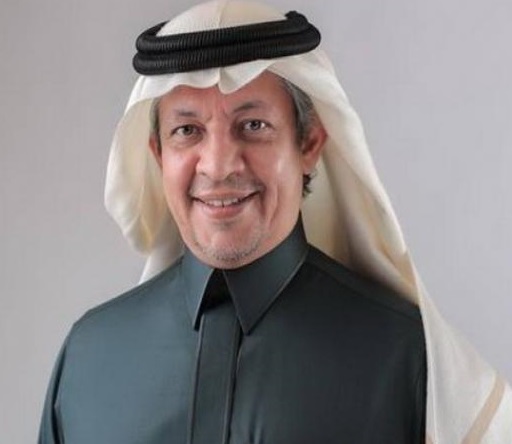
رئيس مجلس إدارة الهيئة العامة للإحصاء يشكر خادم الحرمين الشريفين وسمو ولي عهده على الموافقة الكريمة لتنفيذ الاستراتيجية الوطنية للتنمية الإحصائية
The implementation will subject to monitoring and evaluation system that guarantees achievement at the level of all engaged entities, HE assured
GASTAT Board of Directors’ Chairman Thanks the Custodian of the Two Holy Mosques and HRH the Crown Prince for the Kind Approval on the National Strategy for Statistical Development
The chairman of board of directors of GASTAT, the Minister of Economy and Planning Ministry Mr. Mohmmad AL-Tuwaijri appreciated the kind approval of the Council of Ministers on the national strategy for the statistical development in the meeting that was held on Monday 18th of Sha’ban 1440.
HE thanked the Custodian of the Two Holy Mosques King Salman bin Abdulaziz and HRH the Crown Prince for the kind approval on the strategy. It is the first national strategy for the statistics sector in Saudi Arabia. In fact, the strategy was set to enhance and boost the information and statistical work in Saudi Arabia to reach to an effective response that can meet the increasing demand of statistical data and information. Moreover, the strategy will serve the development path of Saudi Arabia to fulfill its international, regional and national duties. It was based on an ambitious future vision up to 2030 with medium and long-term objectives to be achieved. The strategy has adopted five axes: First, the use of statistical information and data (demand axis), that aims at ensuring the improvement in the use of statistical information and data in Saudi Arabia, and meeting all users’ needs by providing easy-to-use statistical information and data in a timely manner. Second, statistical information and data production (supply axis), which seeks to develop administrative records to be gradually relied upon as a primary source of data, improve field operations, such as censuses, surveys and research, and apply the latest standards, methods and classification policies when collecting, analyzing and disseminating data. Third, the axis of modern technologies, that aims at using the latest technologies in all statistical work stages, and ensuring a high-quality infrastructure system. Fourth, the axis of communication and awareness, which aims at strengthening the society’s statistical knowledge through promoting education and raising awareness, and establishing a culture of communication among key actors within the Statistics & Information Sector. Fifth, the axis of governance through which GASTAT seeks to consolidate the principles that govern the Statistics & Information Sector’s activities, establish a culture of results-based management, ensure the sustainable development of human resources, and attract highly-qualified individuals.
Implementation of this strategy will be subjected to monitoring and evaluation system that guarantees accurate implementation at the level of all engaged entities, HE affirmed. On the other hand, an annual report will be prepared and published on this matter, and two evaluations will be conducted for each five years. The strategy will be updated on a regular basis based on these elements and based on relevant updates as well; occurring inside and outside Saudi Arabia. GASTAT will work hand in hand with all engaged entities as well as all the components of the statistical sector in accordance with the approved strategies to achieve and meet the objectives of Saudi Arabia’s 2030 Vision and the initiatives of the National Transformation Program 2020, he added.
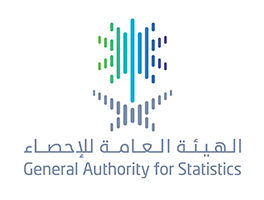
الهيئة العامة للإحصاء: تُصدر نتائج مسح التجارة الداخلية للربع الثالث من عام 2018م
GASTAT: Releases Internal Trade Survey’s Results Q3- 2018
The General Authority for Statistics (GASTAT) released on its official website www.stats.gov.sa the results of the "Internal Trade Survey for the Third Quarter of 2018". The survey is about a set of economic statistics and data for short-term use to measure the performance of the trade sector in order to assess its growth, and identify its strengths or weaknesses. Moreover, it is an important economic activity that contributes to increase employment and GDP, exactly like the retail activity which connects producers with consumers, and focusses on the features and components of establishments engaged in the activities of vehicles sale and repair as well as wholesale and retail sale trade.
The survey showed that the number of Saudi females’ workers of internal trade establishments increased by 4%, compared to the previous quarter. The workers’ number of internal trade sector in Saudi Arabia reached about one million six hundred ninety-three thousand workers by the end of the third quarter of 2018, including almost one million two hundred fifty-five thousands of non-Saudi workers. However, the number of Saudi workers of the same sector was approximately four hundred thirty-eight thousand workers.
Rate of worker’s productivity in internal trade activity increased by 1.12% compared to last year 2018, results showed. They also indicated that the total operating revenues(sales) of internal trade sector reached (151,389 million) one hundred and fifty billion, three hundred eighty-nine million riyals during the second quarter of 2018.
The total operating expenses of the sector during the same period reached (90,224 million) ninety billion, two hundred twenty-four million riyals. Therefore, the operating surplus of the three sectors activities during the third quarter of 2018 was about (49,424 million) forty-nine thousand, four hundred twenty-four million riyals.
Based on the results of the survey, the operating surplus of the wholesale trade was the highest among all the activities of the internal trade and was about (19,153 million) nineteen thousand, one hundred fifty-three million riyals during the third quarter of 2018. On the other hand, the operating surplus of the retail trade activity reached around (16,008 million) one thousand, six hundred eight million riyals. Finally, the operating surplus of the sale and repair of motor vehicles and motorcycles activity accounted to almost (14,262 million) fourteen thousand, two hundred sixty-two million riyals.
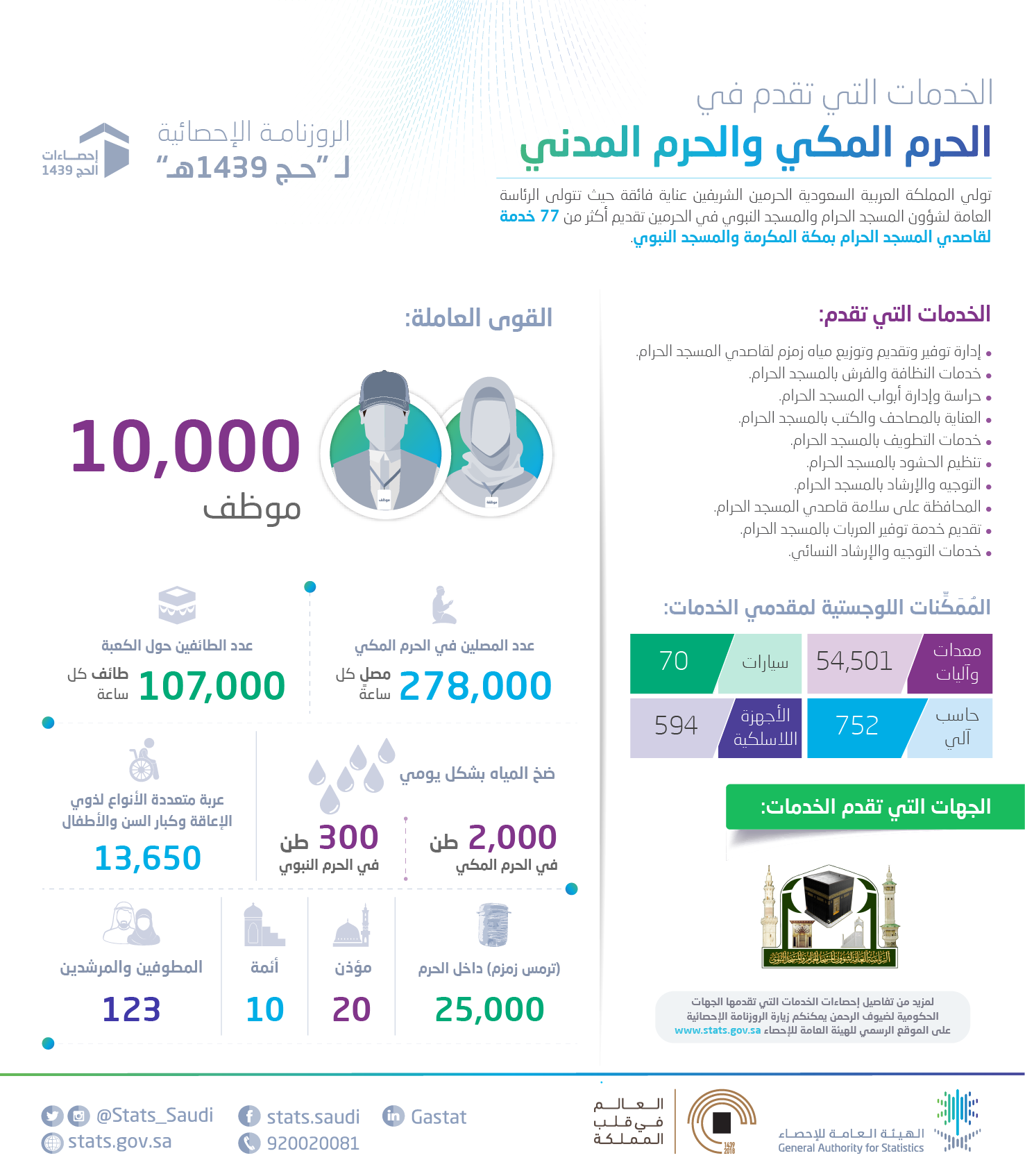
" الإحصاء": أكثر من 278 ألفَ مصلٍّ، و107 ألف طائف حول الكعبة كل ساعة، و42 دراسةً وبحثًا علميًّا لدعم التطوير
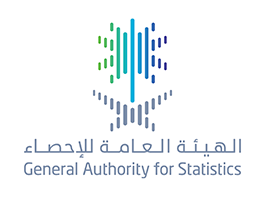
الهيئة العامة للإحصاء: انخفاض معدل البطالة للسعوديين خلال الربع الرابع 2018م مقارنة بالربع السابق
GASTAT releases the Labour Market Bulletin, Quarter (4) 2018
GASTAT: Saudis’ Unemployment Rate Decreases During the fourth Quarter of 2018 Compared to the Previous Quarter
On Sunday Rajab 24th, 1440H. (corresponding to March 31st, 2018) GASTAT released the Labour Market Bulletin for the fourth quarter of 2018 on its official website (www.stats.gov.sa). The bulletin is based on the estimates of the Labour Force Survey that is conducted by GASTAT on a quarterly basis as well as the labour market data from the administrative records available at the related entities (Ministry of Labour and Social Development, Ministry of Civil Affairs, General Organization for Social Insurance, Human Resources Development Fund, and National Information Center).
The results of the 2018 fourth quarter bulletin, based on the estimates of the Labour Force Survey, showed a decrease in the total unemployment rate of Saudis (15 years and above) reaching (12.7%) compared to (12.8%) in the previous quarter. The Saudi males’ unemployment rate reached (6.6%), whereas the unemployment rate of Saudi females reached (32.5%) in the fourth quarter of 2018. The unemployment rate for the total population (15 years and above) stabilized at (6.0%) in the fourth quarter of 2018.
The results of the survey also showed that the economic participation rate of total Saudis (15 years and above) reached (42.0%) in the fourth quarter of 2018. The economic participation rate reached (20.2%) among Saudi females, and (63.0%) among Saudi males in the fourth quarter of 2018. Also, the bulletin indicated that the total employed Saudis (males and females) reached (3,111,199) based on the data of the administrative records.
According to the results of the bulletin and based on the data of the Ministry of Civil Service (Jadarah and Sa’ed) and the data from the Human Resources Development Fund (Taqat), the total number of Saudi job seekers reached (970.229) in the fourth quarter of 2018.
GASTAT has defined jobseekers as Saudi individuals (males and females) registered in job seeking programs of the Ministry of Civil Service (Jadarh and Sa’ed) as well as Human Resources Development Fund (Taqat) where they entered their personal data, qualifications, experiences, and CVs electronically. Jobseekers included in the administrative records are not subjected to the internationally recognized criteria and conditions of the International Labor Organization (ILO); hence, not all of them are considered unemployed individuals. Therefore, not every job seeker is an unemployed individual; they may be looking for a work while still working in another job, as in the case of job seekers in the government sector where they work for their own business and not registered as employees in the governmental administrative records (Civil Service, Social Insurance, commercial registers, and municipal licenses) .
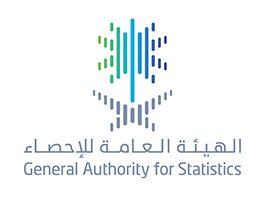
الهيئة العامة للإحصاء: ارتفاع الرقم القياسي لأسعار الجملة خلال شهر فبراير 2019م
GASTAT: Wholesale Price Index Increases in February 2019
On Wednesday, the 13th of Rajab 1440 H/ 20th of March 2019 AD, the General Authority for Statistics (GASTAT) released its the monthly indicator of Saudi wholesale price index for February and it was published on its website www.stats.gov.sa . The indicator recorded (116.5) points with 0.1% increase in February 2019, compared to last month (January) where it recorded (116.4) points. The indicator includes five main sections; agriculture and fisheries products, raw materials and metals, Food products, beverages, tobacco and textiles, metal products, machinery and equipment, and other goods.
The report attributed that increase to the outcome of the changes of the five main sections composing this indicator; metal products, machinery and equipment increased to 1.0%. On the other hand, raw materials and metals decreased by 1.0%, agriculture and fisheries products went down 0.5%, and other goods 0.5%. However, food products, beverages, tobacco and textiles remained without any changes.
Saudi Arabia's wholesale price index measures the average changes in the prices of goods and services sold in primary markets and takes into account the change in price only. Accordingly, all changes resulting from differences in quality, quantity discount, Shipping method, and other influencing factors in order to obtain the net price only after excluding all the mentioned effects. This number is general for all and is prepared in all parts of the Kingdom.
It is worth mentioning that the wholesale price index is used to monitor the changes in the prices of local or imported goods, which are dealt with in the market, and consequently to determine the price trends and the conditions of the market variables. The wholesale price index is one of the important tools used to prepare national accounts, by clearing income and national groups from the impact of price changes.
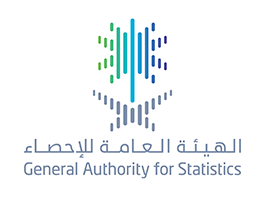
الهيئة العامة للإحصاء: انخفاض الرقم القياسي العام لأسعار المستهلك لشهر فبراير 2019م بنسبة 0.2%
GASTAT: Consumer Price Index (CPI) Decreases by 0.2% in February, 2019
On Tuesday, Rajab 12th, 1440 H (corresponding to March 19th, 2019), The General Authority for Statistics (GASTAT) released its monthly report of Saudi Arabia’s Consumer Price index (CPI) for last February. The report was published on its official website www.stats.gov.sa.
(CPI) went down 0.2% in February and reached (105.7) points compared to (105.9) points in January at the same year.
On the other hand, the report attributed the monthly decline of the index to the declines of the six sections composing it, which are: housing, water, electricity and gas section with 0.6%, home furnishing and equipment section with 0.4%, food and beverages section with 0.2%, culture and entertainment section with 0.2%, transportation section with 0.1%, and finally telecommunication section with 0.1%.
In contrast, two of the main sections witnessed an increase, which are: restaurant and hotels sections with 0.3 %, and personal goods and services section with 0.2%.
Tobacco section, clothing and shoes section, health and education sections remained stable with no change.
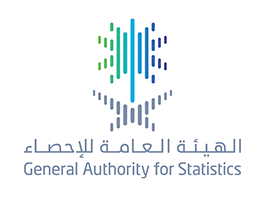
"الإحصاء" تُصدر مؤشر مساهمة المنشآت الصغيرة والمتوسطة في القطاع الخاص للربع الثالث 2018م
Small enterprises’ revenues increase by (0.9%)
“GASTAT” releases the indicator of SMEs contribution to private sector for the third quarter of 2018
On Monday 18th of Rajab 1440 H corresponding 25th of March 2019, the General Authority for Statistics (GASTAT) released the results of SMEs contribution to private sector’ indicator for the third quarter of 2018. The indicator is published on GASTAT official website www.stats.gov.sa. It measures the contribution of SMEs in the growth of the private sector, while reflecting the development of these enterprises.
The results showed an increase in the revenues of small enterprises which employ (6 to 49) workers in the private sector with a percentage of (0.9%) compared to the third quarter of last year (2017). However, the revenues of medium enterprises that employ (50 to 249) workers in the private sector registered (113,654,809) SAR in quarter 3, 2018.
The results also demonstrated an increase in the number of small enterprises workers as they recorded (1,627,482) workers in quarter 3, 2018 with a percentage of (1.8%) compared to the same quarter of 2017.
Regarding the numbers of workers in medium enterprises which employ (50 to 249) workers in the private sector, they increased to reach (917,847) workers in quarter 3, 2018 with a percentage of (2.5%) compared to quarter 3, 2017.
The results of the indicator of SMEs contribution to private sector (quarter 3, 2018) indicated a decrease by (2.4%) in the numbers of workers in micro enterprises which employ (less than 5 workers) in the private sector with (2,015,019) workers during the third quarter of 2018, compared to the third quarter of 2017.
On the other hand, the results also revealed a decrease in the revenues of micro enterprises that employ (less than 5 workers) in the private sector during the third quarter of 2018, with a percentage of (3.0%) compared to the third quarter of 2017, where they registered (171,256,482) SAR.
